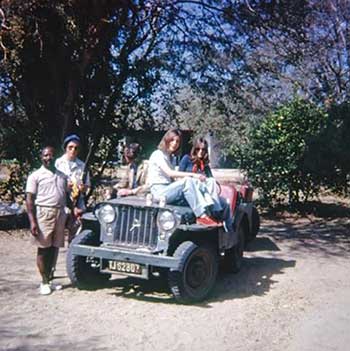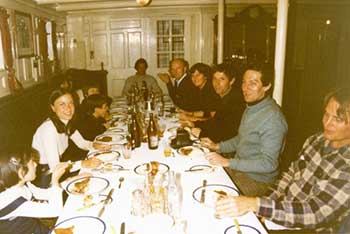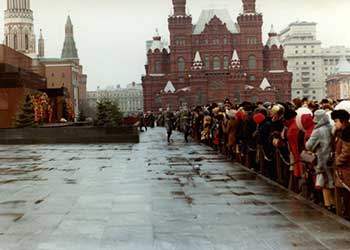Journeys with Open Eyes: Seeking Empathy with Strangers
About the Book

From Chapter 5: The infamous Willy’s jeep that broke down in lion country; East Transvaal South Africa
I see places and therefore their people slightly differently to most. I have participated in or led development projects all over the world, so I have gained some unusual insights into what makes places work and people tick.
Working and living with those with and for whom you are planning new towns, industrial complexes and major infrastructure such as transport or water supplies forces you to get to understand them on a day to day basis, regardless of language, religion, physical environment, historical or political perspective, gender or agenda. 40 years ago, personal agendas might have been measured in weeks; 20 years ago that had reduced to days, but now in our time poor societies, it can be measured in minutes. People make instant judgments whether you are going to be help or hindrance to what they want to achieve, so you have to create the right impression fast. Empathy takes a little longer to evolve but it helps to set off on the right foot.

From Chapter 10: Future of India, The expressions on these girls’ faces suggest they are not going to accept the subservience of their mothers’ and grandmothers’ generations
A second route to finding empathy – or failing to do so which can be just as informative – is to experience hair-raising events that help you observe people under pressure – displaying grace, panic or emotions in between. Through more than 4 decades in advising on development projects, I have had plenty of such pressure including a wide range of bizarre, sometimes dangerous and often hilarious situations. Life seems to speed up during such uncertainties, but it slows again to an appreciation pace when living, working and getting to know people. Whatever; empathy emerges where there is a growing medium of goodwill.

From Chapter 7: All smiles at supper on the Titicaca Ferry between Bolivia and Peru. The attempted murder was after supper, in the middle of the night.
The sheer variety of places I write about offers a colourful context for illustrating that despite evident physical and environmental differences, what makes people tick has much in common wherever they are. Humanity triumphs over most things.
More times than I care to acknowledge, I probably owe good fortune and occasionally my life to simple humanity.

From Chapter 9: Queueing at Lenin’s tomb Moscow. I was nearly arrested for stepping out of line to take the photo.
This is not autobiography; it spends more time looking at others than at me. Too many travelers merely skim the surface of their destinations, returning home frustrated by knowing that they did not penetrate under the skin of a place or its people. Having lived and worked in so many places, I have had more opportunities to probe into people’s mindsets and ways of looking at the world than is normally possible. I invariably relied on my geographical training with its overtones of social anthropology to understand how things work physically in a given place. Social empathy often derives from the physical environment dictating day-to-day behaviour. We sometimes forget to look at physical determinism (a.k.a. ‘the bleedin’ obvious’) to understand why people are the way they are.

From Chapter 10: Recovering from the stormy helicopter flight in Sarawak, with the airframe – and me – still intact
No one covers this much ground around the world without encountering weird and sometimes dangerous situations, though most of the latter originated from eccentric human behaviour rather than sheer menace: marooned on a tidal sand spit in the middle of the Pacific; lost out of radio contact in a storm on my first solo cross country learning to fly; car wheels buried in soft sand in the 50 degree August heat of the Kuwaiti desert; stuck with a gun running mercenary on the South African border during the then Rhodesian bush war; caught up in (yet another) government coup in Bolivia; questioned by Iran’s secret police over an identity mix up; and a similar inquisition from criminal police entering Peru as a potential witness to attempted murder. How I extricated myself from these and a few other delicate predicaments owes a lot to humour and good fortune, equally critical to emerging unscathed and still to be here to tell each tale.
Empathy is the common stream running through it all.
Most chapters are arranged by areas of the world, except the one on learning to fly, and another which looks at islands and their otherness to nearby mainlands and why this might be so. The final chapter considers all this rushing about the world and whether it has made me any smarter in sizing up situations and finding what makes people tick than during those first timid steps walking home from school aged 6.
Empathy found? Most times yes, but not always as I expected it!




